Since the beginning of the European invasion of the Americas more than five centuries ago, there has been an ongoing debate regarding the indigenous peoples of the continents. From a scientific perspective, data relating to this debate come from: (1) archaeological findings, including artifacts, features, and sites; (2) human remains; and (3) DNA. The basic questions from this debate center on: (1) When did the first humans arrived in the Americas?; (2) Was there more than one migration, more than one founding group?; and (3) What was the migration route (or routes) used?
In 1996, two men discovered a human skull in the shallow water of the Columbia River in Columbia Park in Kennewick, Washington. Subsequently, archaeologist James Chatters investigated and found more of the skeleton. Chatters noted conflicting characteristics in the skull. In their book Archaeology in Washington, Ruth Kirk and Richard Daugherty report:
“The shape of the skull and facial bones suggested a European, probably an early-day fur trapper or settler. But the teeth were decidedly worn, a characteristic of early Indian skulls on the Columbia Plateau because of grit in their food, a result of using stones to rind and pound dried fish and roots.”
In Chatters’ initial evaluation of the skeleton, he noted that the man had a fractured skull, an injured left elbow, broken ribs, and something embedded in the right hip. The object embedded in the hip was shown by X-rays and a CT scan to be a stone spear point with serrated edges. Ruth Kirk and Richard Daugherty report:
“Its shape was like a laurel leaf, a classic style (called a Cascade point) widely used beginning around 9,000 years ago and continuing until about 5,000 years ago.”
 Shown above is an example of a Cascade point from a display at the Sacajawea Museum in Kennewick, Washington.
Shown above is an example of a Cascade point from a display at the Sacajawea Museum in Kennewick, Washington.
In their chapter on the skeleton in Kennewick Man: The Scientific Investigation of an Ancient American Skeleton, Douglas Owsley, Aleithea Williams, and Karin Bruwelheide write:
“The skeleton exhibits evidence of physical activity involving rigorous use of the right arm that resulted in damage to the right shoulder joint. Traumatic injuries resulting in an embedded stone point in the right hip bone and multiple fractures to the ribs, mostly on the right side, show advanced healing without chronic infection. Bone remodeling and development suggest a sustain level of physical activity subsequent to injury.”
Radiocarbon dating determined that the remains were about 9,350 years old. This date means that this is one of the oldest examples of human remains in the Americas. While the media dubbed the find as “Kennewick Man,” the local tribes called it “The Ancient One.” One of the displays in the East Benton County Museum in Kennewick features this ancient find.
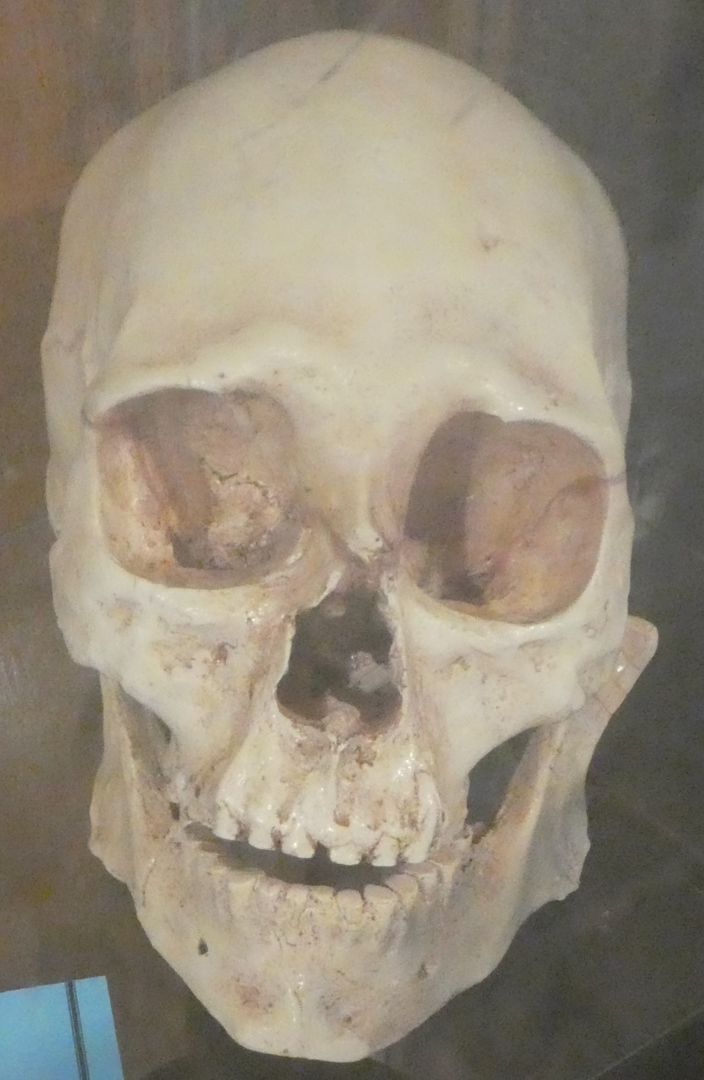 Shown above is a cast of the skull of Kennewick Man.
Shown above is a cast of the skull of Kennewick Man.  A photograph showing the skeleton.
A photograph showing the skeleton.
The body of the Ancient One had been intentionally buried with his left side toward the river and his head upstream. In an article in American Archaeology, Andrew Lawler reports:
“Kennewick Man was laid to rest some distance from the riverbank, on his back, with his hands at his side, palms down, and feet relaxed. His head was slightly raised, looking towards his feet.”
The man was about 55 years old when he died, weighed 159 pounds, and stood 5’8” tall. Marine foods, probably salmon or steelhead trout, accounted for about 66% of his protein intake.
In his book Ancient Encounters: Kennewick Man and the First Americans, anthropologist James Chatters reports:
“Kennewick Man had widespread but minor degenerative joint disease—arthritis—in his elbows, knees, lower back, and, most severely, his neck.”
His hearing was impaired by benign bone tumors. According to Chatters:
“Evidently, Kennewick Man spent quite a bit of time in cold water or experienced frigid winters with his ears unprotected.”
Earlier in life he had suffered a number of injuries. In his report in Scientific American Discovering Archaeology, James Chatters writes:
“He had suffered a spear wound in his pelvis, fractured ribs, and injuries to his left elbow and forehead.”
In his book, James Chatters also writes:
“His bones are strong and well developed, indicating a healthy childhood.”
He goes on to report:
“He had been repeatedly injured, with a blow to his chest that broke several ribs, injuries to his left arm, and of course the healed wound from a stone spear point in his right hip.”
With regard to the spear wound, Chatters reports:
“Kennewick Man probably saw the spear coming and tried to dodge it, which indicates he was facing his assailant. The depth of penetration—more than 2 inches (51 mm)—indicates that the weapon came at a high velocity and was almost certainly propelled by an atlatl, or throwing stick.”
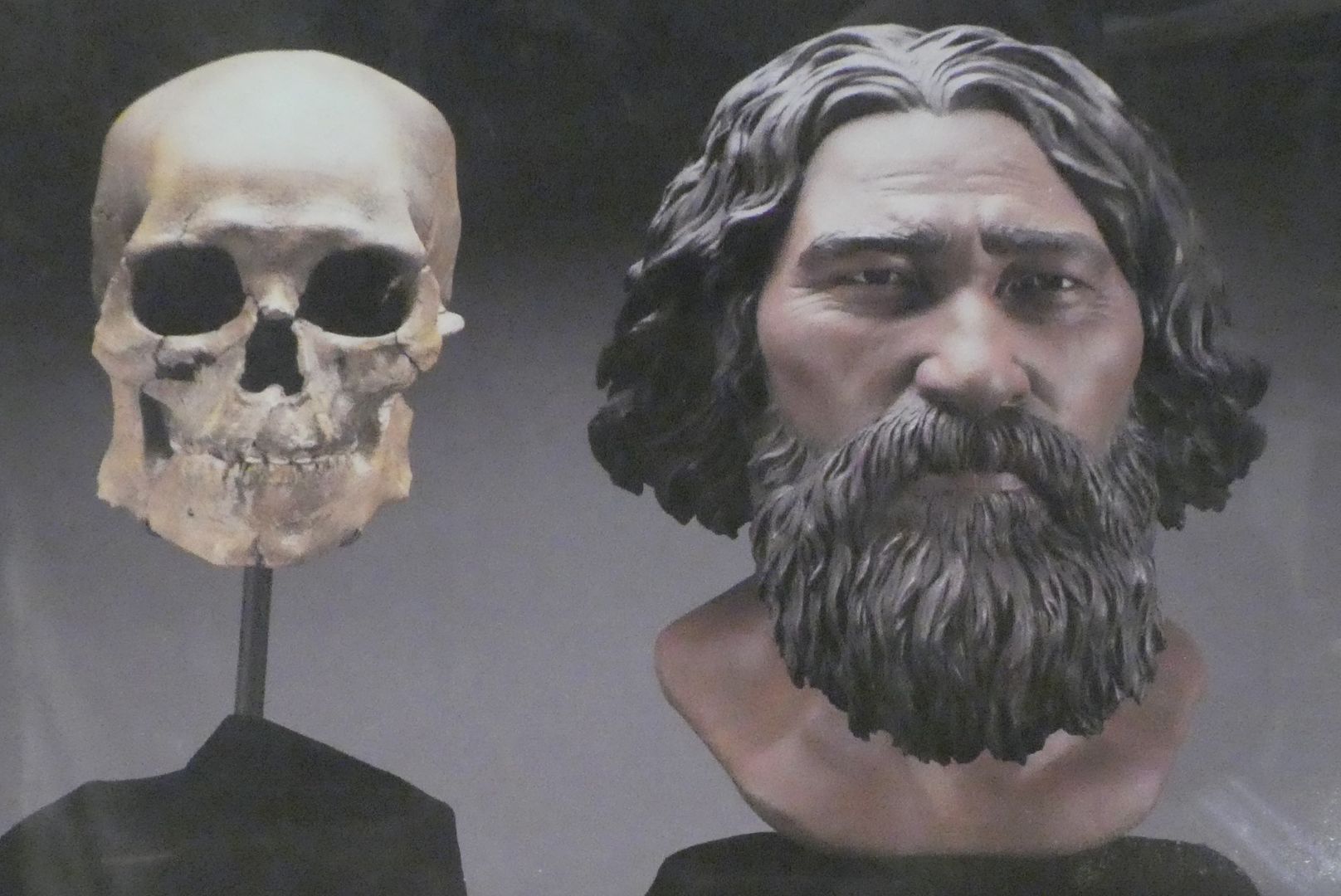 Shown above is one of the facial reconstructions of Kennewick Man.
Shown above is one of the facial reconstructions of Kennewick Man. 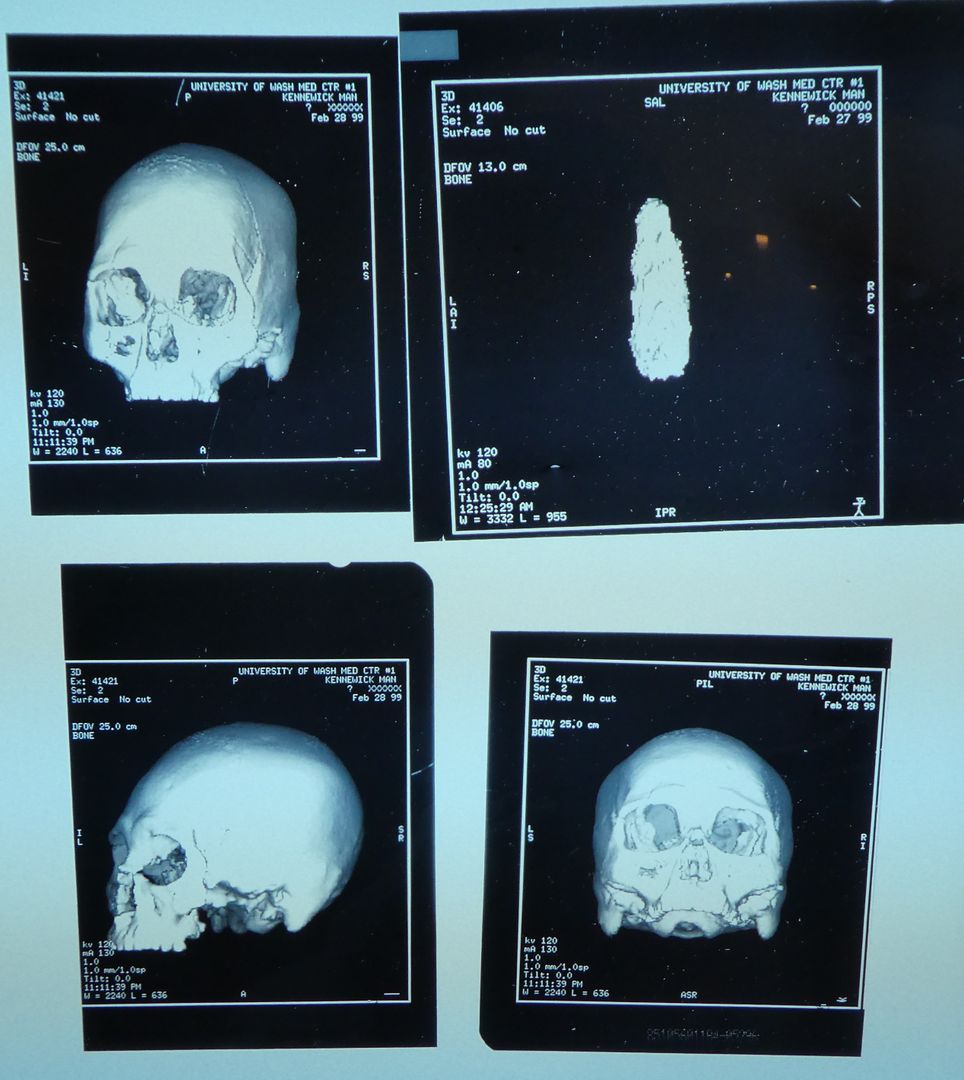 Shown above are some of the images of the skeleton.
Shown above are some of the images of the skeleton.
With regard to the DNA from Kennewick Man, Nikhil Swaminathan, in a report in Archaeology, writes:
“The findings bolstered the hypothesis that a single founding population, of East Asian (with some Siberian) ancestry, originally settled the Americas.”
In 1998, the Corps of Engineers destroyed the site in direct violation of the National Historic Preservation Act. The tons of rubble and the 4,000 willow, dogwood, and cottonwood trees which the Corps planted on the site ensures that no further archaeological work can be done there.

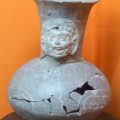
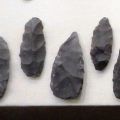
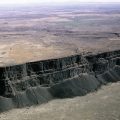
Leave a Reply